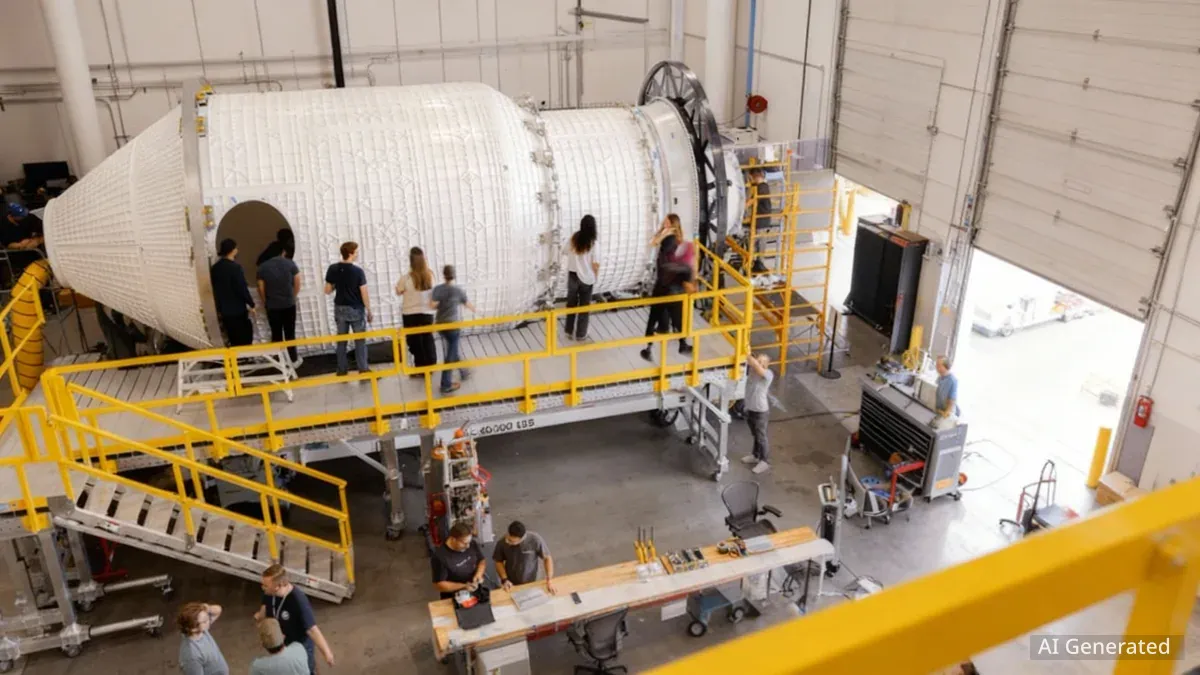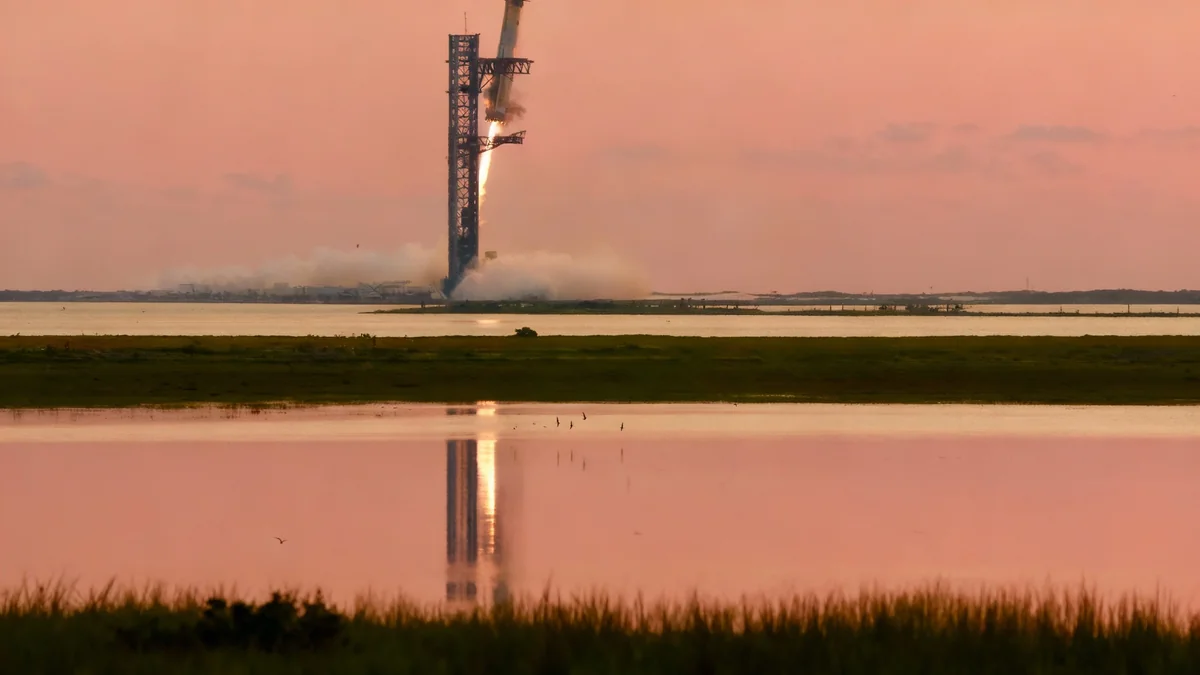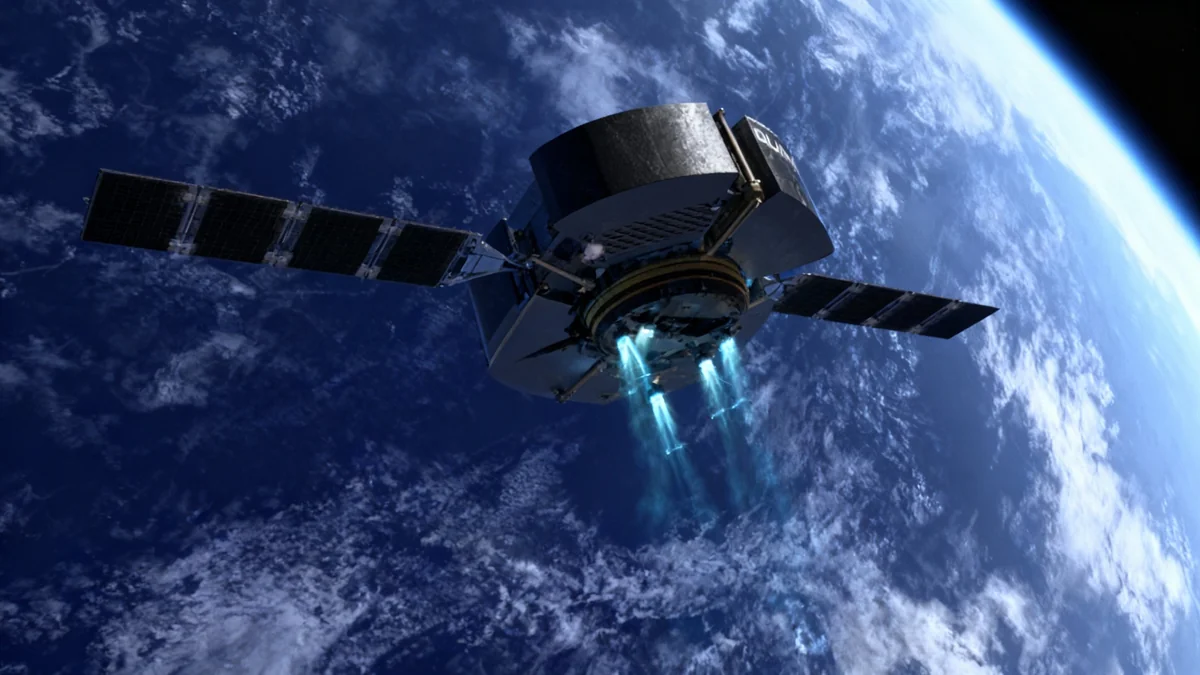The private space company Vast is entering the final assembly phase for its Haven-1 space station, targeting a launch as early as the second quarter of 2026. If successful, Haven-1 could become the first standalone commercial station in low Earth orbit, marking a significant step in the private development of space infrastructure.
The station is scheduled to launch aboard a SpaceX Falcon 9 rocket and is designed to host rotating crews of four astronauts for missions lasting up to 10 days.
Key Takeaways
- Vast's Haven-1 space station is scheduled for a SpaceX Falcon 9 launch in 2026.
- The primary structure's final weld is complete, with integration of the hatch and window next.
- Haven-1 will weigh approximately 14,000 kilograms, the heaviest payload for a Falcon 9.
- The station is designed to support four-person crews for short-duration missions over a three-year lifespan.
- This project serves as a precursor to a larger, modular station, Haven-2, intended to succeed the International Space Station.
Final Assembly and Testing Underway
Vast has achieved critical manufacturing milestones for Haven-1. The company recently completed the final weld on the station's primary structure and has since finished painting the main body. This progress signals a shift from fabrication to the final assembly and integration stage.
The next steps involve installing key components, including the flight article's hatch and a large domed window for Earth observation. Once these elements are integrated, the structure will undergo extensive pressure and load testing at a facility in Mojave, California, to verify its integrity for spaceflight.
Rapid Development Timeline
Founded in 2021, Vast has grown to approximately 800 employees and handles most of its manufacturing in-house. Drew Feustel, Vast's lead astronaut, noted the rapid pace of development. "When I joined in December 2023, we were still deciding between stainless steel and aluminum," he said. "Now, less than two years later, the primary structure is welded."
Mission Profile and Launch Details
Haven-1 is designed to be the heaviest spacecraft ever launched on a SpaceX Falcon 9, with a mass of around 31,000 pounds (14,000 kilograms). The launch has already been booked with SpaceX for a window beginning in the second quarter of 2026.
The station is intended to operate for three years, hosting up to four separate astronaut missions. Each mission will consist of a four-person crew staying aboard for approximately 10 days. This mission structure allows for a total of 160 astronaut-days over the station's operational life.
"If we stick to our plan, we will be the first standalone commercial LEO platform ever in space with Haven-1, and that's an amazing inflection point for human spaceflight," stated Drew Feustel, a former NASA astronaut now leading Vast's astronaut program.
A Focus on Human-Centered Design
Vast is developing Haven-1 with a strong emphasis on crew comfort and experience, drawing lessons from both the functional design of the International Space Station (ISS) and the modern aesthetics of SpaceX's Crew Dragon capsule.
The interior will feature "Earth tones" and an overall design intended to create a calmer, more comfortable environment than the utilitarian interiors of previous spacecraft. The company's approach extends to daily living systems for the crew.
Innovations for Crew Comfort
- Advanced Cuisine: Vast hired a former food developer from Campbell's to reimagine astronaut meals.
- Improved Sleep System: An inflatable sleep system has been developed, allowing astronauts to adjust pressure to create a sense of simulated gravity, a departure from the tethered sleeping bags used on the ISS.
According to Feustel, the clean and functional environment pioneered by SpaceX was initially met with skepticism by astronauts but was later appreciated for its calming effect. Vast aims to build on this concept for its long-duration habitats.
Paving the Way for Haven-2 and Beyond
While Haven-1 represents a major milestone, Vast views it as a crucial testbed for a much more ambitious project: Haven-2. This next-generation station is being designed as a larger, modular platform intended to help replace the capabilities of the ISS, which is scheduled for deorbit in 2030.
Haven-2 is planned to have several key upgrades:
- Increased Volume: The modules will be larger to provide more living and working space.
- Dual Docking Ports: A second docking port will allow for simultaneous visits from crew and cargo vehicles.
- Modular Architecture: The design will allow for the attachment of additional cargo modules or future habitat nodes.
Future Launch Requirements
The larger modules for Haven-2 will require the launch capability of a SpaceX Falcon Heavy rocket equipped with extended fairings. A proposed central node for the station is even larger, with an eight-meter diameter, making it dependent on the successful development of SpaceX's Starship megarocket.
Funding and NASA's Role
The Haven-1 project is privately funded, with its launch already paid for. However, the final design and development of Haven-2 are linked to NASA's Commercial LEO Destinations (CLD) program, which aims to foster private sector replacements for the ISS. Feustel mentioned that Vast's architecture is flexible enough to adapt once NASA's requirements are finalized.
Eva Behrend, Vast's vice president of communications, emphasized that these stations are steps toward the company's ultimate goal. "We were founded for long-term living in space, so artificial gravity," she said. "But we realized we needed stepping stones. So we said, 'Let's just build it and prove we can do it.'"





